How to personalize your email marketing automation with Clearbit, Customer.io, and Salesforce


What is email marketing automation?
Before we dive into the email marketing automation recipe, let's start with our mise en place and set the stage.
First up, what is email marketing automation?
Email marketing automation turns the manual sending of marketing emails into a workflow that automatically generates recipients based on specific criteria. and then triggers sending emails to those recipients in a pre-set sequence.
But what's the difference between email marketing automation and good email marketing automation?
Julie Beynon, Clearbit's Head of Analytics and Chief Martech Data Plumber, shares her thoughts.
To me, good email marketing automation is effectively replicating authentic one-to-one conversations with your prospects and customers — at scale.
This means you need to do more than send automated emails with first name personalization. Context, relevance, and accuracy is critical. Everything that your recipients would expect if you were emailing from your personal email account is just as important when automating.
How does email marketing automation work?
Now that we know what good email marketing automation is, how does it work?
Julie has thoughts on this, too:
Good email marketing automation works when you have two really important ingredients. First, you need great data. You need to understand who it is that you're sending emails to. This means having as much up-to-date firmographic, demographic, behavioural, and if possible, technographic data on your list as possible.
In other words, the better your data is, the more relevant your automated emails will be.
Take two variations of the same scenario as an example:
- You send an automated, but generic "book a demo" email to Rachel Chu 10 days after she joins your mailing list.
- You send a highly relevant, personalized automated email to Rachel Chu, a marketing manager from Wonka Candy Company (a 100-person, HubSpot-using company with $10MM in ARR) one day after she visits your pricing page.
Scenario #1 feels like a crapshoot! Scenario #2 feels like good marketing.
Julie argues that there's one more key ingredient for good email marketing automation.
Great data comes first. But you also need standout content — personalized, authentic emails that people actually want to read because they come at the right time and provide info that's actually useful for them.
When you have great data and standout content, you're ready to build workflows in your marketing automation platform of choice.
What are the benefits of email marketing automation?
Now we know what email marketing automation is and how it works. But what are the benefits?
The three major benefits of email marketing automation
- Flexibility - After the initial investment of setting up a marketing automation platform, it's an inexpensive and flexible channel to generate new revenue
- Efficiency - Automation of manual tasks increases your marketing efficiency
- Personalization - If done right, email marketing automation lets you personalize your communications at scale
And if you're lucky, prospects and customers won't only take notice, they might even go out of their way to share some compliments.
Here's a great LinkedIn shout-out for our newsletter (we're very proud!):

And here are two email responses to automated messages that made our day:
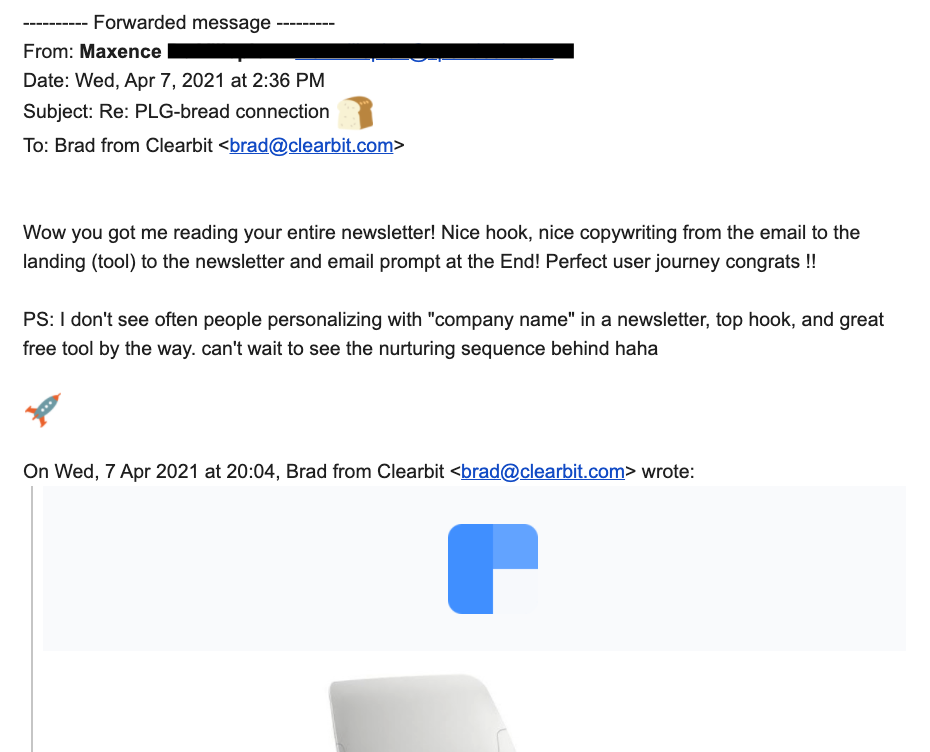
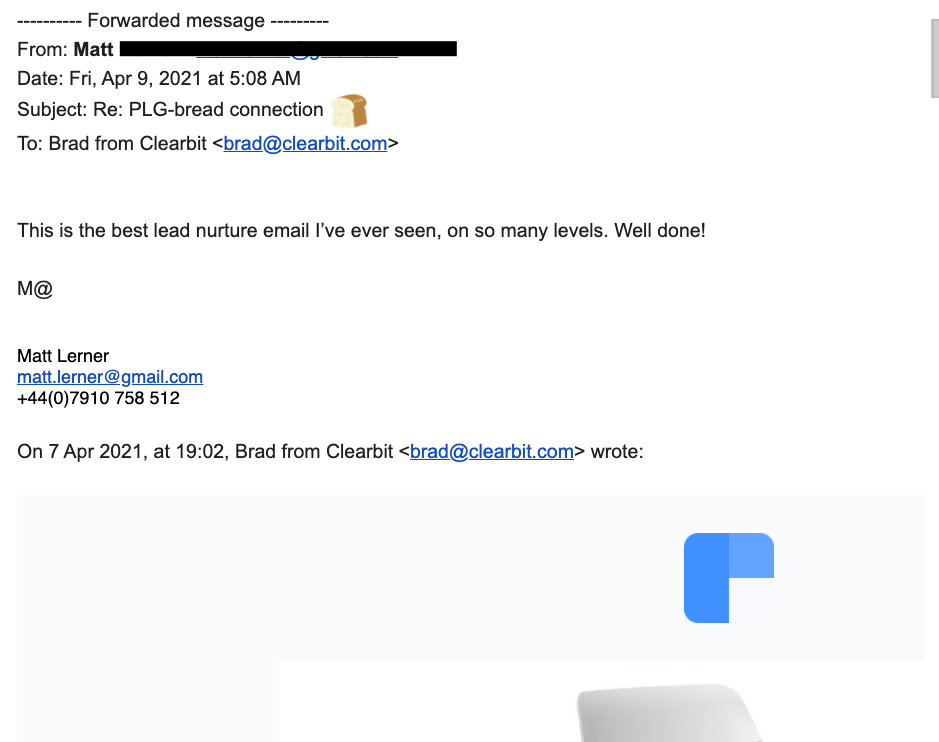
By the way, if you're interested in engaging stories and exclusive data join our Clearbit monthly newsletter. It's only $100/month. Just kidding — it's free!
How to personalize email marketing automation
Now, how about we learn how to cook up a personalized email automation campaign of your own with an example recipe?
We'll walk you through how to connect Clearbit-enriched data from Salesforce (our CRM) to Customer.io (our marketing automation platform), and then how to use that data to personalize automated email workflows.
Step 1: Connect Clearbit to Salesforce
First, make sure you've connected Clearbit to Salesforce. You can do this by going to the Connections section within Clearbit.
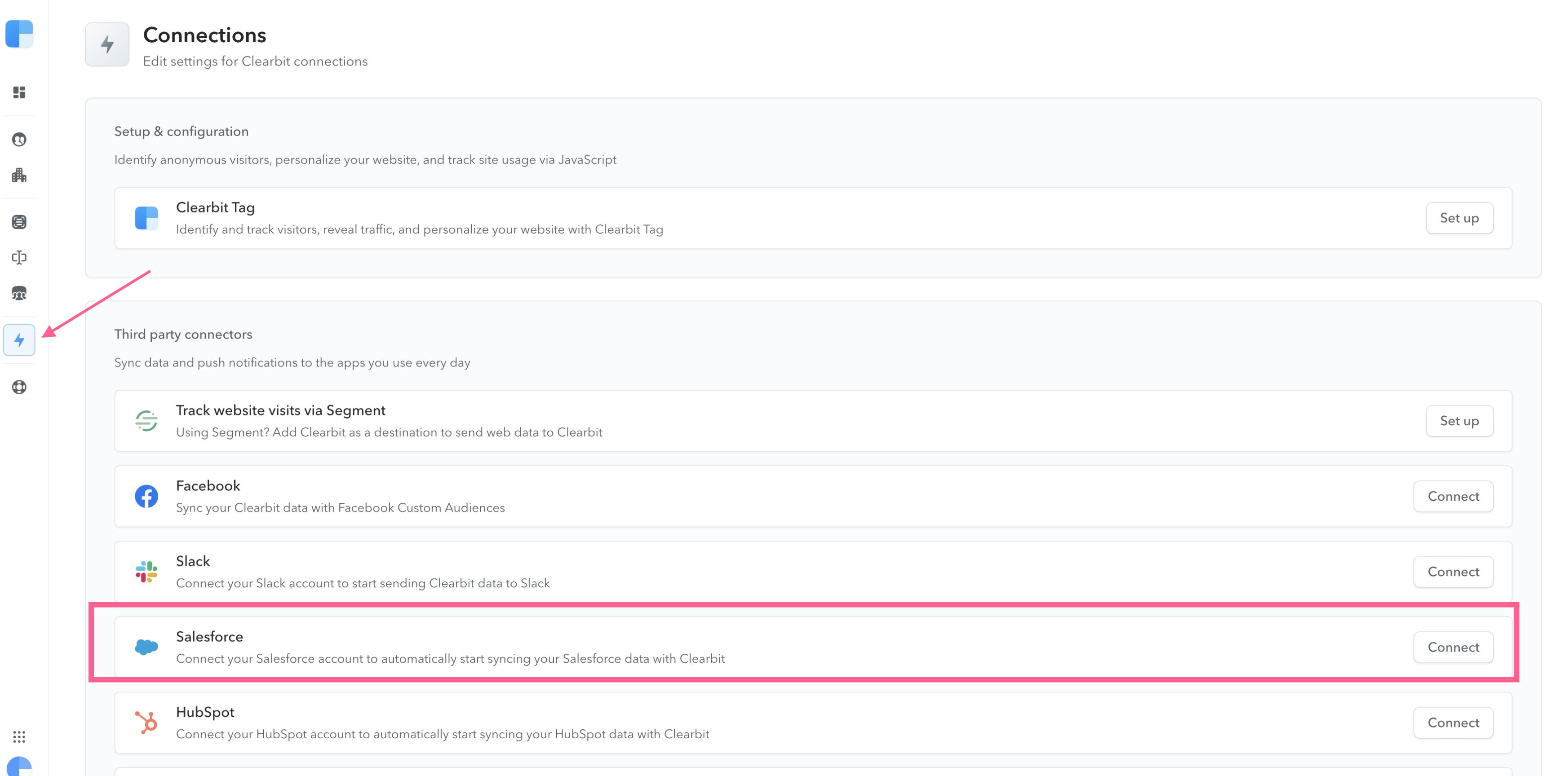
Next, make sure you've configured all of your field mappings.
Once these two steps are complete, you're ready to send newly enriched Salesforce Account and Contact data to your marketing automation platform.
Step 2: Connect Salesforce to Customer.io
For this recipe, we're going to use Customer.io, which is our marketing automation platform at Clearbit.
We have a custom integration that connects Salesforce to Customer.io, so we won't dive into the details. Customer.io does have a built-in Zapier integration with Salesforce, which is very easy to configure.
Note: Connecting Salesforce with your marketing automation platform will vary depending on what platform you use. You'll typically find straightforward native or third-party integrations with Salesforce.
Step 3: Create your segment
Now that you have all of your Salesforce data available in Customer.io (enriched by Clearbit!), you have access to a huge list of attributes to help build your automated segment. Accurate, up-to-date data points like job title, number of employees, company location, and technologies used are now at your fingertips.
Start by giving your segment a name.
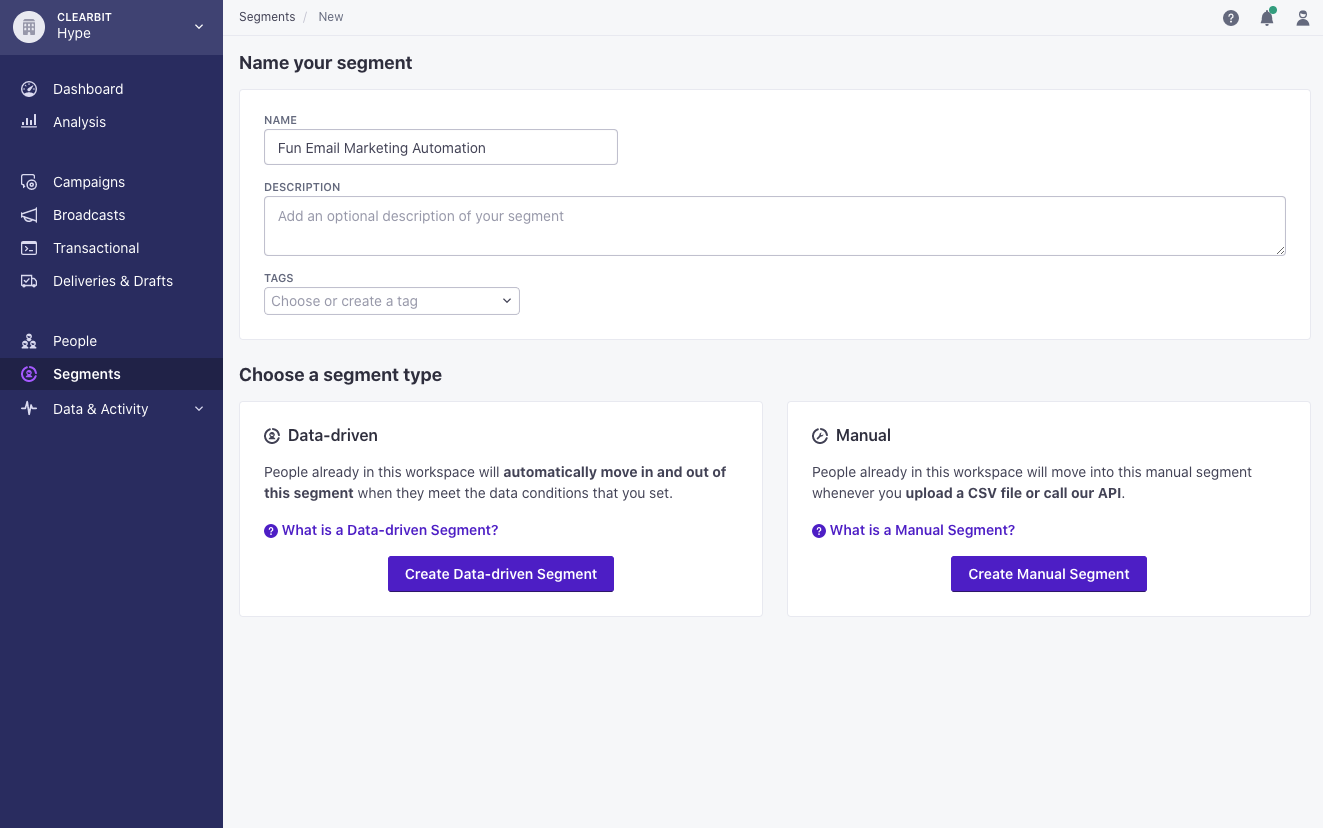
Then, select all of the conditions that you'd like your email recipients to meet in order to enter your segment.
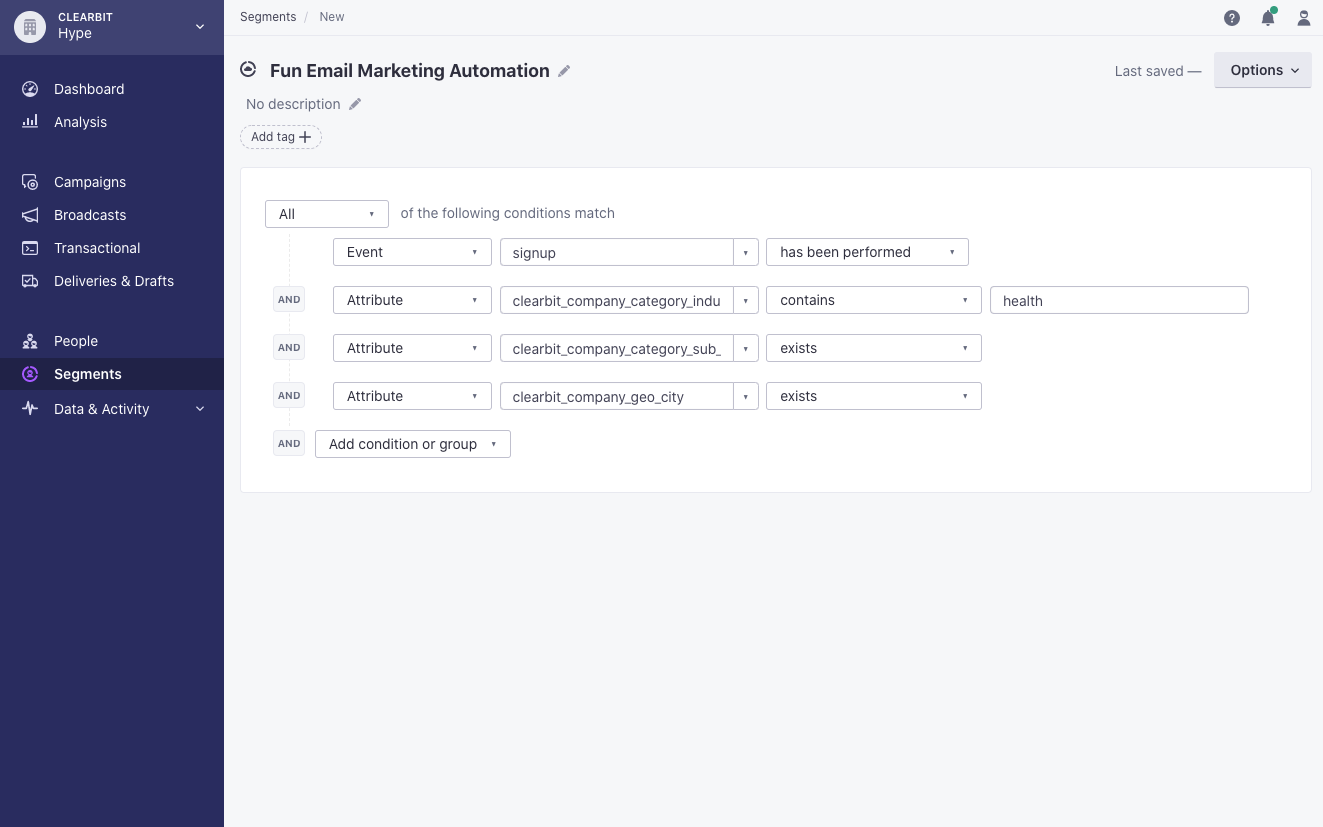
Step 4: Set your trigger
With your new segment complete, select it as the trigger for your email marketing automation.
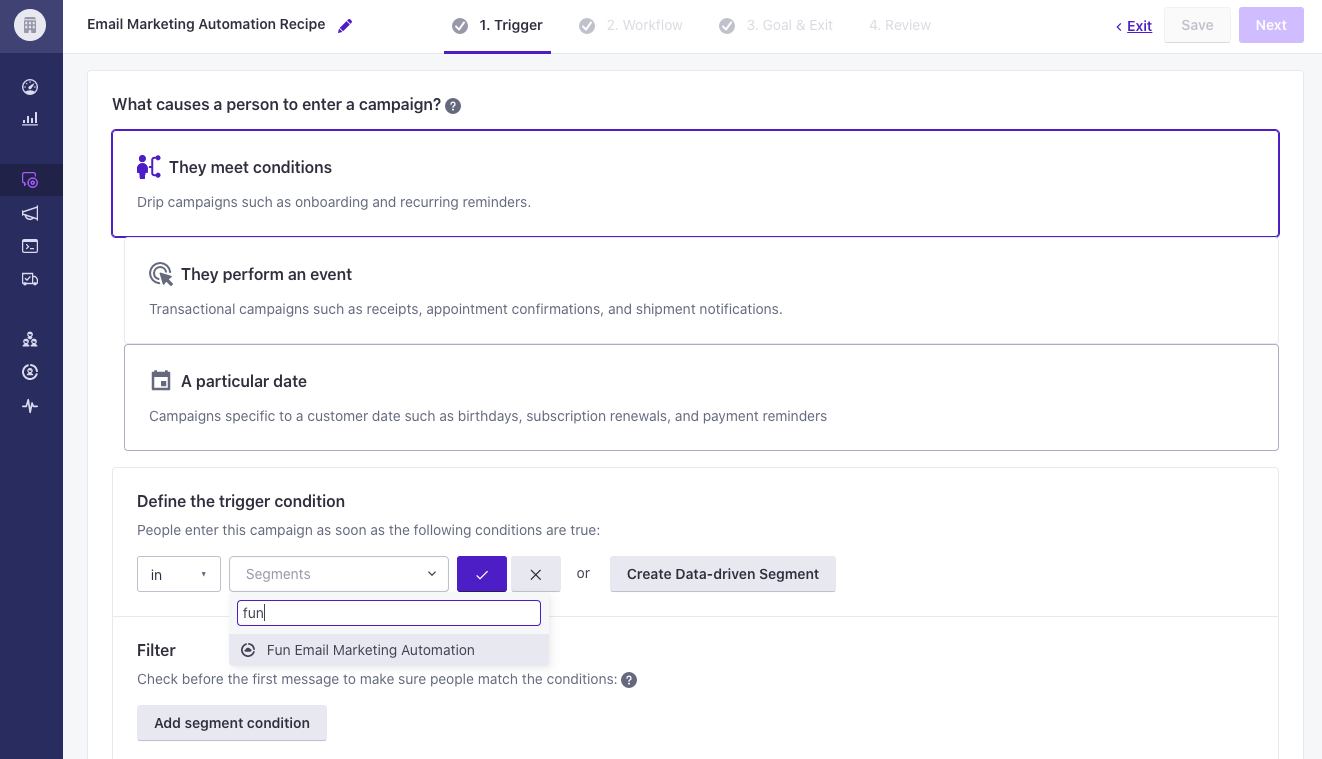
Once you've completed this step, any time someone meets the conditions of your new segment, they'll automatically enter your automated sequence.
Step 5: Build your automated workflow
Here's where you get to use data, delays, and flow control options to build your own custom workflow.
In the example below, we set up a simple time delay so that recipients will get our automated email one day after entering our segment in Customer.io. But this is only scratching the surface of what you can do. With the various delay and flow controls, you'll be able to create more complex workflows to deliver the custom experience you want to deliver to your sendees.
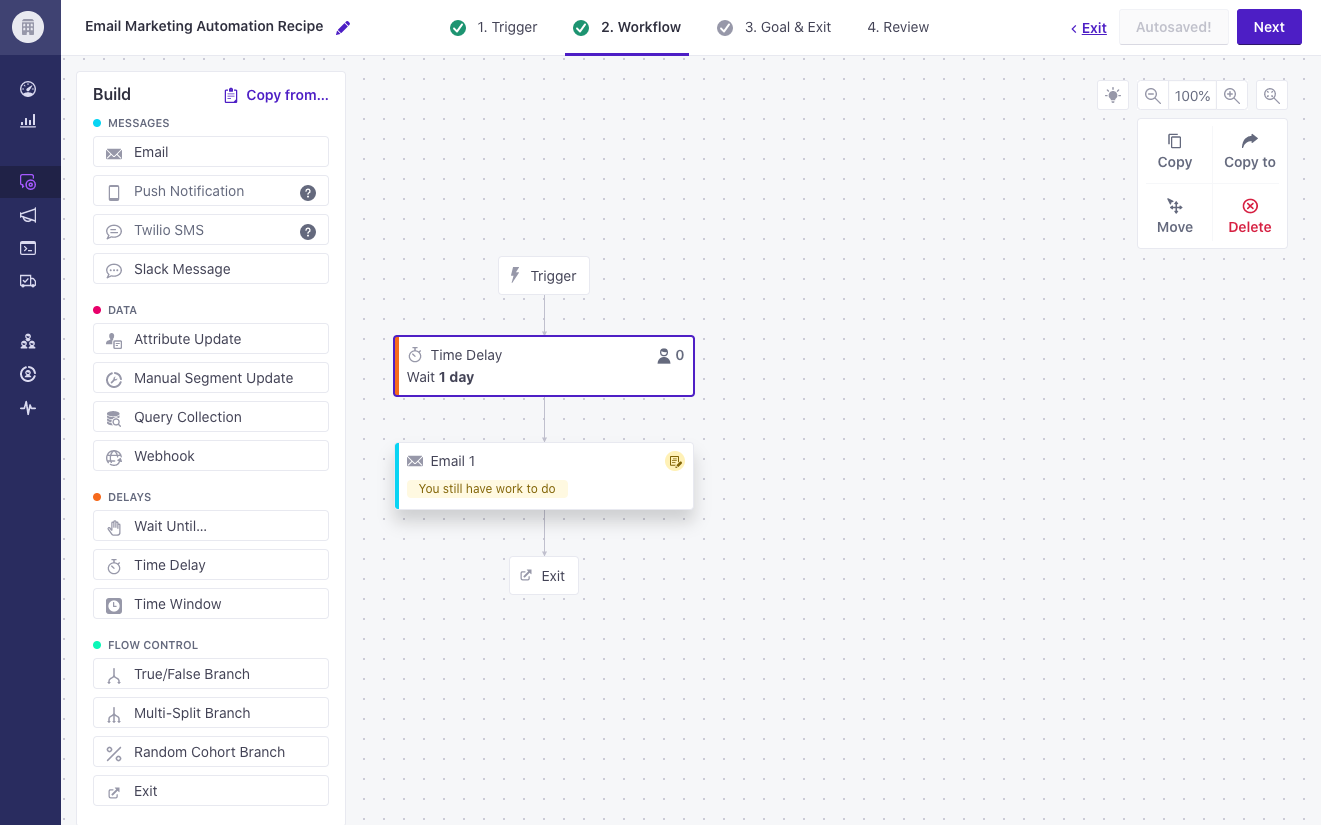
Step 6: Create your personalized messages
Time for the fun part. Create your email(s), and don't forget to use all of the Clearbit-enriched Salesforce data that's now available to personalize your messages. Here’s what that level of detail in your message may look like.
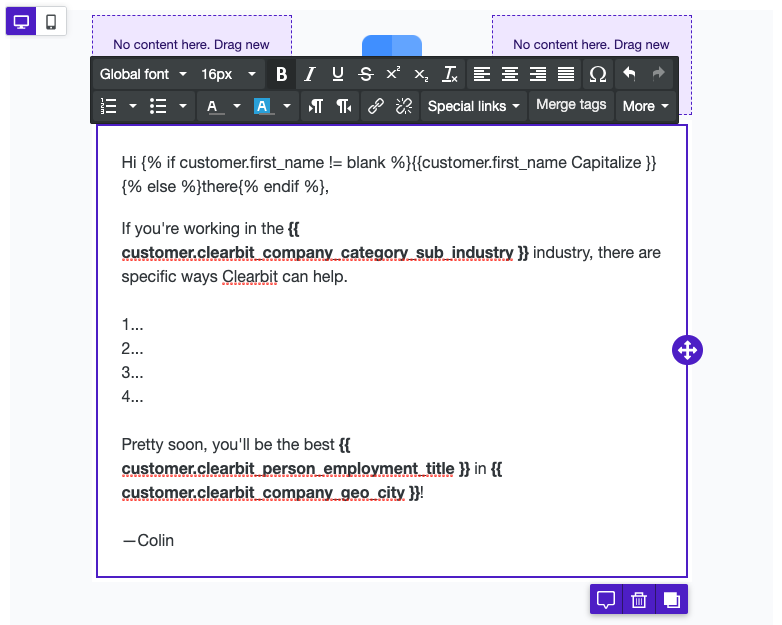
Once you've had an initial read-over, check out your email(s) in preview mode for a quick spot check. This lets you see all of your Salesforce-derived personalization tokens completed with real recipient data.
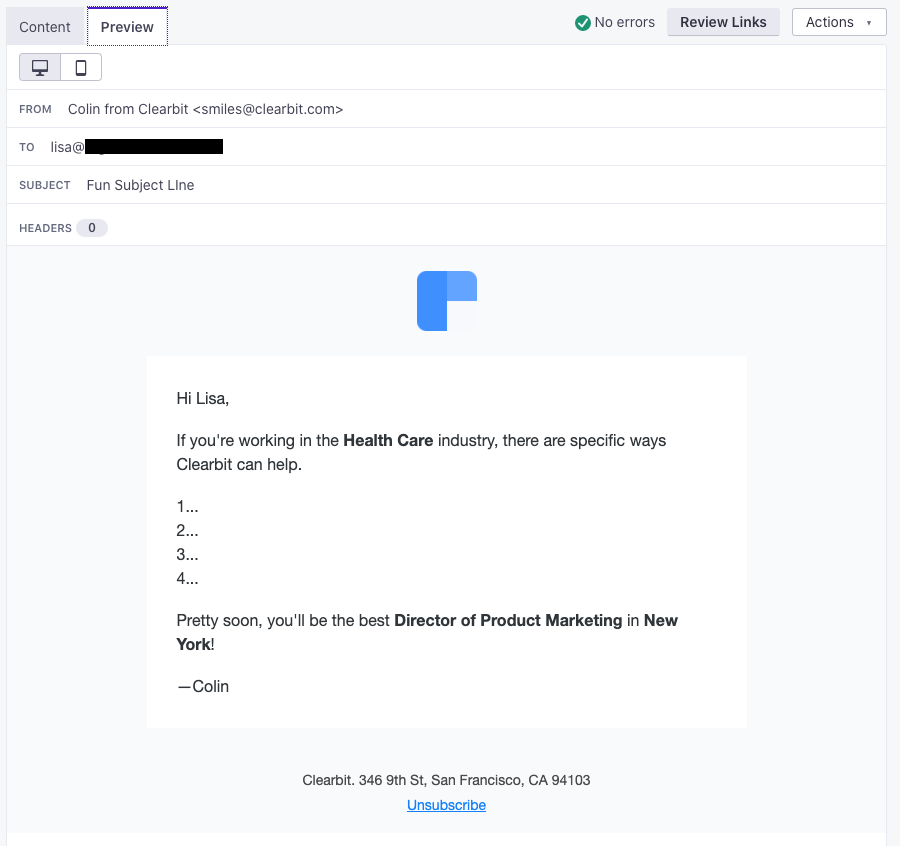
Now that everything's set up and you're sure it's working, move on to the final step to set your automation live.
Step 7: Set your automation live
You made it! This is the last step in this recipe and all it requires is a final review.
Now take a deep breath and set your email marketing automation live.
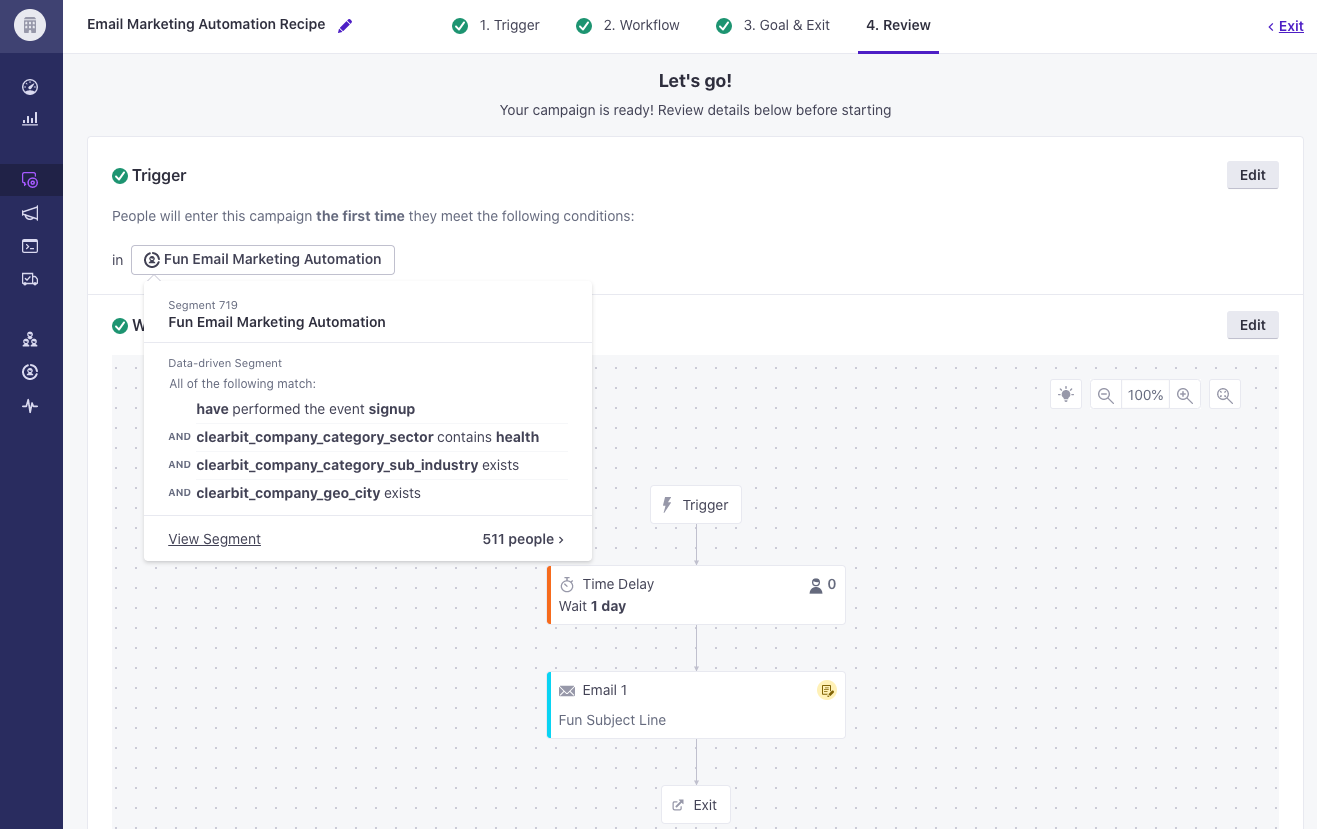
Congrats! You've now built an automation that will send relevant, personalized messages to a very specific audience at exactly the cadence you want.
Quick recap
When you pair accurate, up-to-date data in your marketing automation platform with accurately personalized messages, you empower your team to have relevant, authentic conversations, at scale.
In other words: you're creating really good email marketing automation.
All it takes is:
- Connecting Clearbit to Salesforce
- Connecting Salesforce to your marketing automation platform
- Building automated segments, workflows, triggers, and messages with your newly accessible Clearbit-enriched data attributes
That's it! Here's to sending fewer generic messages – and more hyper-relevant emails to build more revenue for your business. 🚀


